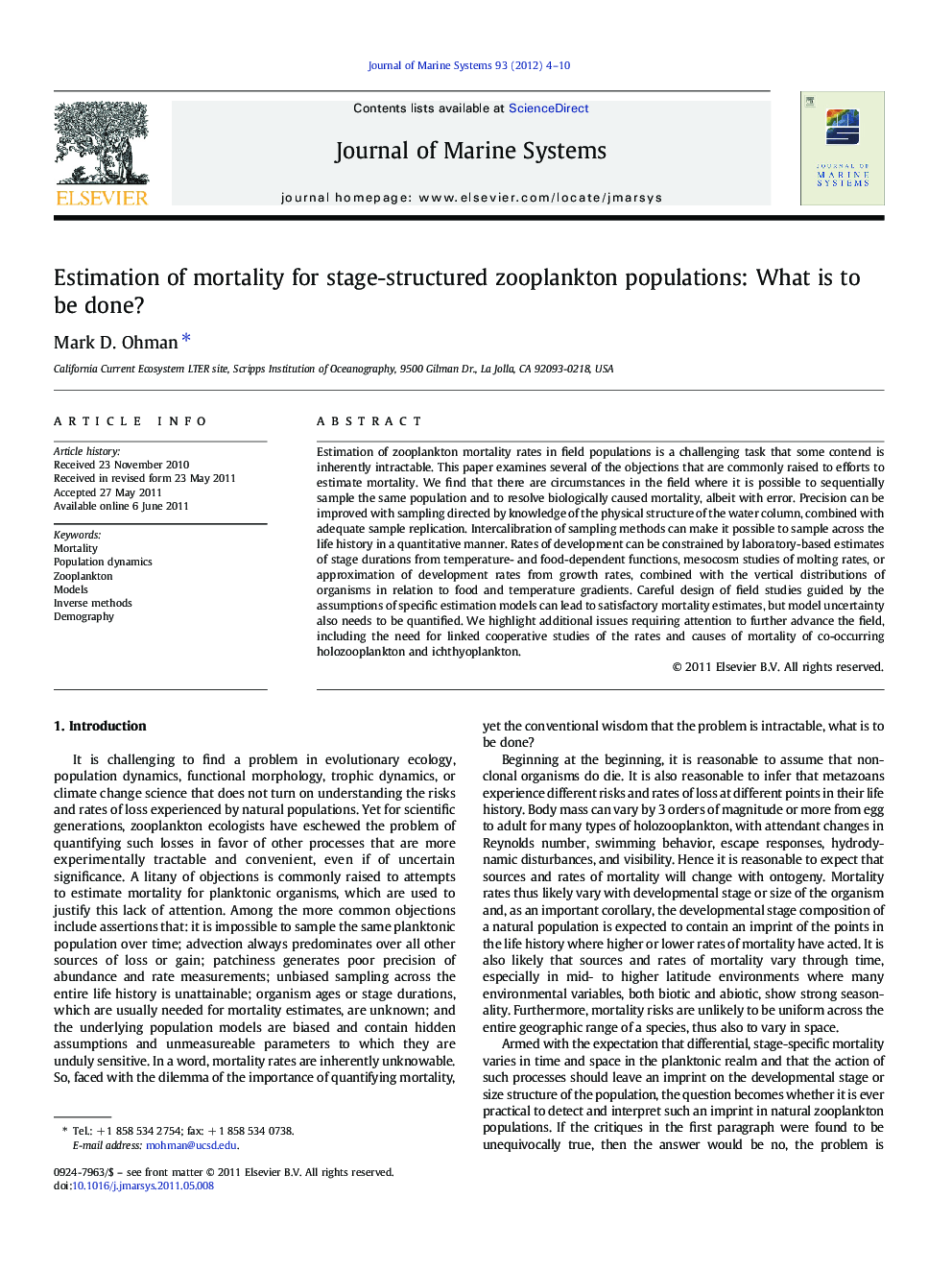| Article ID | Journal | Published Year | Pages | File Type |
|---|---|---|---|---|
| 4548291 | Journal of Marine Systems | 2012 | 7 Pages |
Estimation of zooplankton mortality rates in field populations is a challenging task that some contend is inherently intractable. This paper examines several of the objections that are commonly raised to efforts to estimate mortality. We find that there are circumstances in the field where it is possible to sequentially sample the same population and to resolve biologically caused mortality, albeit with error. Precision can be improved with sampling directed by knowledge of the physical structure of the water column, combined with adequate sample replication. Intercalibration of sampling methods can make it possible to sample across the life history in a quantitative manner. Rates of development can be constrained by laboratory-based estimates of stage durations from temperature- and food-dependent functions, mesocosm studies of molting rates, or approximation of development rates from growth rates, combined with the vertical distributions of organisms in relation to food and temperature gradients. Careful design of field studies guided by the assumptions of specific estimation models can lead to satisfactory mortality estimates, but model uncertainty also needs to be quantified. We highlight additional issues requiring attention to further advance the field, including the need for linked cooperative studies of the rates and causes of mortality of co-occurring holozooplankton and ichthyoplankton.
► This paper reviews previous criticisms of methods used to estimate zooplankton mortality. ► Issues addressed include sampling, advection, patchiness, age estimation, and model bias. ► We find that careful selection of sites, models, and sampling methods can make mortality estimation tractable. ► New methods are needed for aging zooplankton, Lagrangian tracking, and resolving intraspecific variations in mortality.
